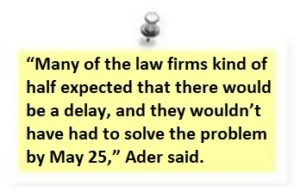Attention Houstonians! Come “Wine” about eDiscovery with ACEDS: eDiscovery Socialization
I’ve told several people that some of my best posts come after a couple of glasses of wine (at least they look great to me!), but I don’t usually get to write about wine in the actual blog. This is one of those rare times.
On Thursday, July 12, the Houston Chapter of the Association of Certified E-Discovery Specialists (ACEDS) is hosting a happy hour and social in Houston (of course, duh!). It will be at the Sonoma Wine Bar (upper Kirby location, you have to specify because there are two locations) at 2720 Richmond Avenue, Houston, Texas 77098. The event will be from 5:30pm to 7:30pm. Join the ACEDS Houston Chapter along with the generous sponsor of the event, Ernst & Young, for an evening of networking and fun (inside info, I’m told both Ernst & Young will be there, so you don’t want to miss it). :o)
You can click here to RSVP for the event. Or contact Jean Rivers at jrivers@bafirm.com for more information. If you’re in Houston (or going to be here on that date), come join us at the wine bar voted “best wine bar ambience in Houston by customers”.
Here’s the graphic to show you the wine bar and to reiterate what I just said (from the department of redundancy department):

So, what do you think? Do you ever get a chance to network with eDiscovery colleagues? Well, now’s your chance! Please let us know if any comments you might have or if you’d like to know more about a particular topic.

Sponsor: This blog is sponsored by CloudNine, which is a data and legal discovery technology company with proven expertise in simplifying and automating the discovery of data for audits, investigations, and litigation. Used by legal and business customers worldwide including more than 50 of the top 250 Am Law firms and many of the world’s leading corporations, CloudNine’s eDiscovery automation software and services help customers gain insight and intelligence on electronic data.
Disclaimer: The views represented herein are exclusively the views of the author, and do not necessarily represent the views held by CloudNine. eDiscovery Daily is made available by CloudNine solely for educational purposes to provide general information about general eDiscovery principles and not to provide specific legal advice applicable to any particular circumstance. eDiscovery Daily should not be used as a substitute for competent legal advice from a lawyer you have retained and who has agreed to represent you.








